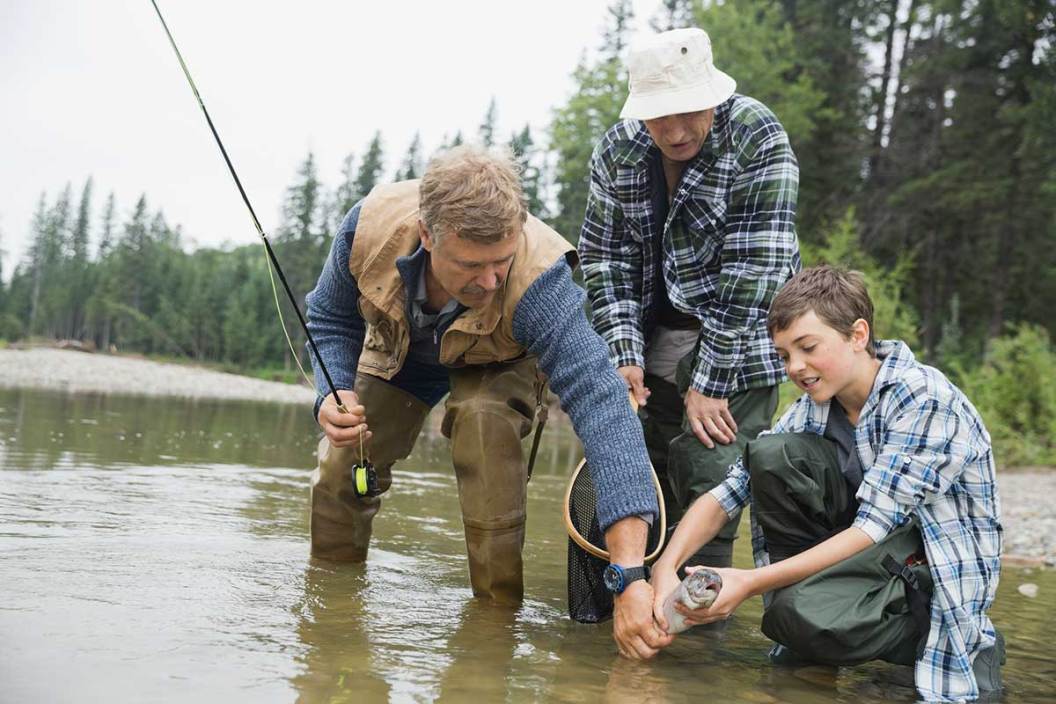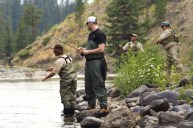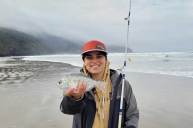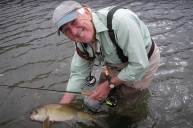The Mayfly Project is a nonprofit organization using fly fishing as a catalyst to mentor children living in foster care. The organization's mission is to support children in foster care using fly fishing to introduce them to their local water ecosystems. The hope is that connecting participants to a rewarding hobby will provide an opportunity for them to have fun, feel supported, and develop a meaningful connection with the outdoors.
"I just went fly fishing for the first time and it was awesome," Cameron, a Mayfly Project participant declared in a testimonial video on the organization's website. "I have been in foster care for four years and the reason I am in foster care is my family abused me."
Dakota, another project participant was in foster care for five years and wanted a permanent family to do things outdoors with. Clayton, said that fishing and being in the water helped him forget about his problems for a little while. There are more than 420,000 children living in foster care across the country. Every year 23,000 of them age out of the foster care system, which means they enter adulthood with little support—or love—left to figure life out on their own. Spending time outdoors engaging with others while participating in an activity like fly fishing can improve physical and mental wellness while fostering a sense of community.
Kaitlin Barnhart, co-founder of the Mayfly Project and a mental health professional based in Northern Idaho, personally experienced the benefits of spending time outdoors. She was using fly fishing as a way to relieve stress from her high-pressure career working for Child Protective Services and Juvenile Detention. She started taking children in foster care fly fishing in 2006.
"I realized that not only did fly fishing provide mental rest, it was empowering the children I worked with," Barnhart said. "They were proud of themselves and felt good about what they were accomplishing, which is so important for this population specifically."
Years later, she was scrolling Facebook when she came across a logo designed by the well-known fly fishing artist Andrea Larko. She felt drawn to the image and messaged Larko for more information. Larko informed her that it was for an Arkansas man who was taking children living in foster care fly fishing. Barnhart immediately reached out because she was doing the same thing a few states over.
That man was Jess Westbrook. He had turned to fly fishing to manage the intense anxiety that crashed down on him shortly after the birth of his son in 2014. Around the same time he was introduced to mentoring children in foster care through an organization at his church. That combination of mentoring foster kids while fly fishing made perfect sense to Westbrook. It was a way to give back to the community through fly fishing, a sport that had helped him navigate some very tough hurdles. He recognized the potential that fly fishing had to support foster kids through their own personal journeys.
Westbrook and his wife, Laura, introduced The Mayfly Project in Arkansas in 2015. The plan was to focus on his own community, taking local foster children out fly fishing. When he contracted the services of Larko that brought Westbrook and Barnhart together.
The trio saw so much promise in the idea. With the Westbrooks' backgrounds in business, finance, and law combined with Barnhart's background in mental health and youth leadership, they had the seed. Once they figured out how to move forward with establishing a dedicated network of fellow community-minded fly anglers, there was no turning back.
The next year, after countless thought sessions, hours of planning, clever coordination, and an unquantifiable amount of hope and enthusiasm, The Mayfly Project Program was launched nationally. Now, the program is thriving across the United States, with event locations (called projects) spanning from the West Coast to the East Coast—and numerous places in between.
There are many ways to get involved with The Mayfly Project, including mentoring, donating, fundraising, registering a child, and more. For more information about how you can help, visit the website, or social media channels.




